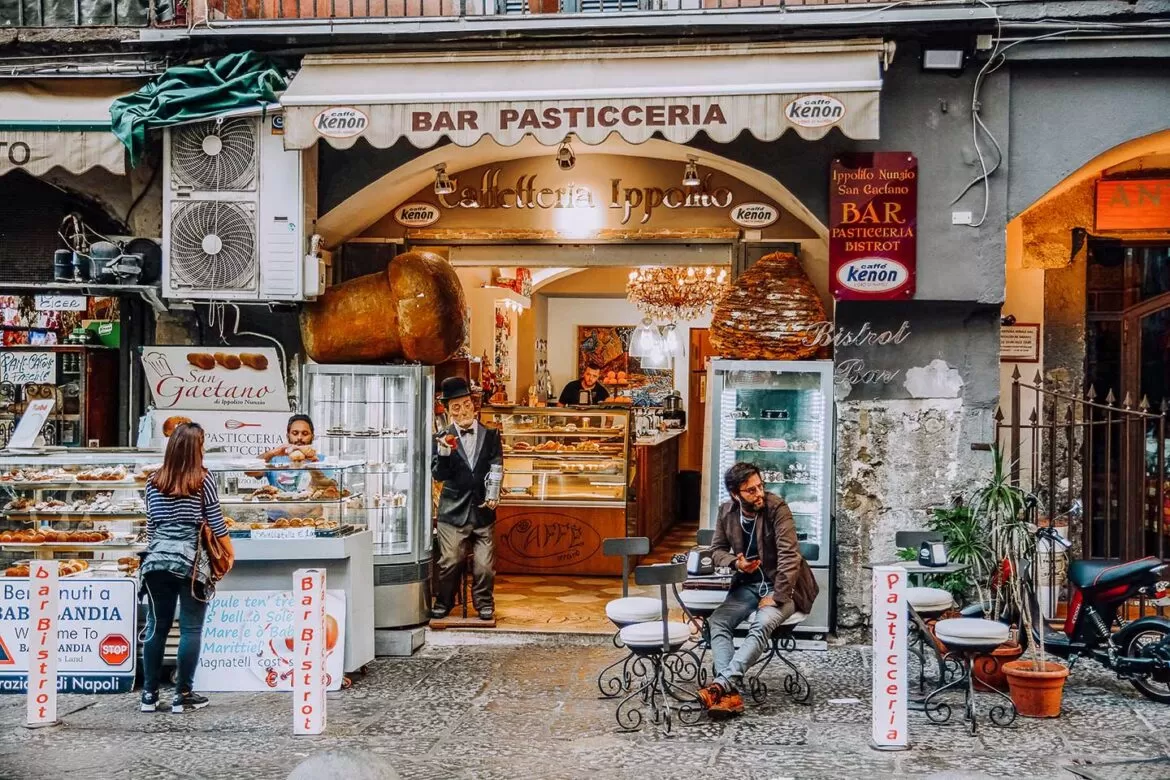Ah, Italy, the home of food and fine cuisine. Known worldwide and loved by visitors who come to discover the Bel Paese (The beautiful country) not only for its architectural, artistic and natural beauty but also to enjoy a unique gastronomic experience. While you are undoubtedly familiar with pizza, pasta, gnocchi and lasagne, I bet you’ll be surprised to find out what a traditional Italian breakfast looks like.
Having pancakes or even a traditional English breakfast like scrambled eggs, sausages and bacon is not common in Italy and is hard to come by. Instead, what you’ll find is a quick and simple meal that smells of baked goods and fresh coffee.
In this guide, you’ll learn everything you need to know about breakfast in Italy to make the most of your stay during your visit. We’ll look at how and what Italians eat for breakfast, the names of typical breakfast and drinks and how to order breakfast in an Italian café (called “bar”).
As they say, “breakfast is the most important meal of the day”. So let’s not waste any more time and… iniziamo (let’s get started)!
Typical Italian breakfast foods you need to know
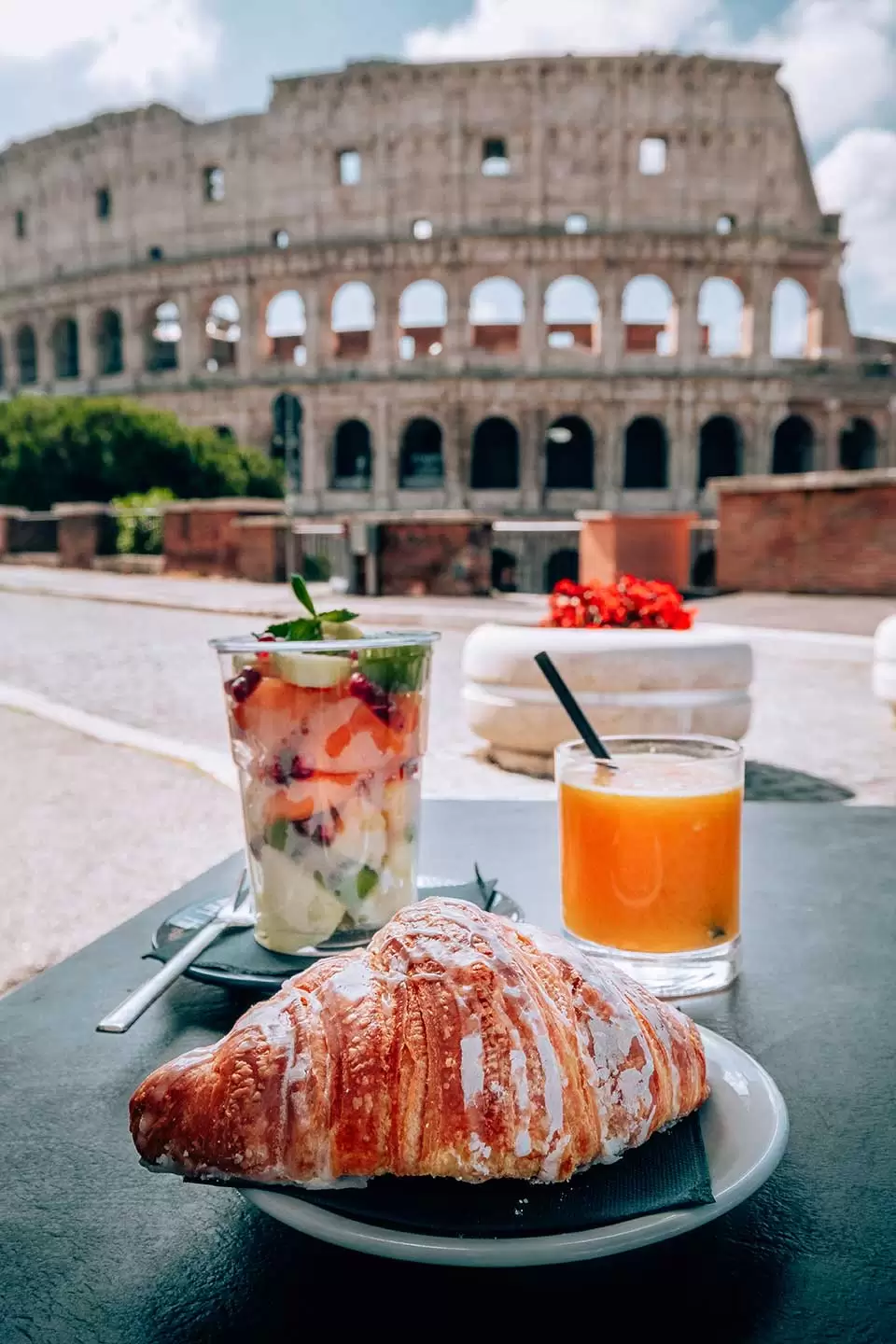 First of all, to say “to have breakfast” or “to eat breakfast” in Italian is “fare colazione”. Here is a list of traditional Italian breakfast foods to know. Some of them are typical of a classic Italian breakfast prepared at home, while others can be ordered in cafes or found in hotels and B&Bs.
First of all, to say “to have breakfast” or “to eat breakfast” in Italian is “fare colazione”. Here is a list of traditional Italian breakfast foods to know. Some of them are typical of a classic Italian breakfast prepared at home, while others can be ordered in cafes or found in hotels and B&Bs.
| Italian breakfast food or drink | English translation | Where to find it |
|---|---|---|
| Caffè* | Coffee | Households, cafes, hotels |
| Cappuccino | Cappuccino | Households, cafes, hotels |
| Succo (di frutta) | (Fruit) juice | Households, cafes, hotels |
| Spremuta d’arancia | Fresh squeezed orange juice | Households, cafes, hotels |
| Latte Latte macchiato Latte e cacao | Milk Milk with drops (literally: stained) of coffee Milk with cocoa (for kids) | Households, cafes, hotels |
| Tè (nero) | (Black) tea | Households, cafes, hotels |
| Cornetto / Brioche | Croissant | Cafes, hotels |
| Saccottino, fagottino, bombolone, ventaglio, etc. | Types of Italian breakfast pastries filled with chocolate, jam or custard cream | Cafes, hotels |
| Pane (burro) e marmellata Pane e Nutella | Bread (butter) and jam Bread and nutella | Households, hotels |
| Cereali | Cereals | Households, hotels |
| Biscotti | Breakfast biscuits | Households, hotels |
| Ciambella | Italian doughnut | Cafes, hotels |
| Crostata
Fette di torta | Tart made with shortcrust pastry and jam filling Slice of cake | Households, cafes, hotels |
| Formaggio, affettati, uova, frutta… | Cheese, cold cuts, eggs, fruit… | Only hotels that serve international breakfast |
Keep reading to learn about the different types of coffee you can order in Italy!
Breakfast in Italy: 7 Things you need to know about a classic Italian breakfast
1. The average Italian breakfast is small in size
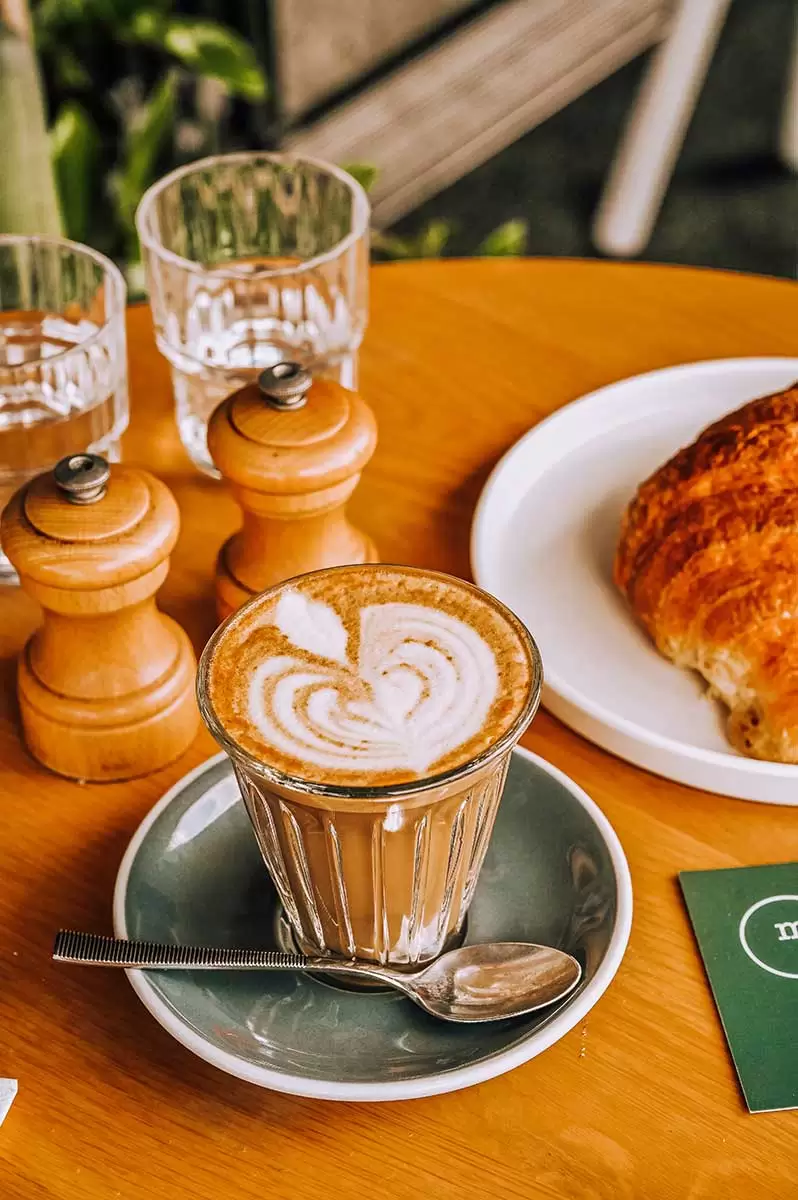 Generally speaking, Italians don’t like to start the day with a heavy breakfast which is why they don’t spend much time cooking, but rather eat something simple, small and sometimes even on the go, without indulging. Instead, they have a “spuntino” (snack) later in the morning. A typical Italian breakfast consists of a beverage (coffee, fruit juice or tea) and something to eat, such as biscuits, cakes or pastries, all of which give you a quick hit of energy before starting the day.
Generally speaking, Italians don’t like to start the day with a heavy breakfast which is why they don’t spend much time cooking, but rather eat something simple, small and sometimes even on the go, without indulging. Instead, they have a “spuntino” (snack) later in the morning. A typical Italian breakfast consists of a beverage (coffee, fruit juice or tea) and something to eat, such as biscuits, cakes or pastries, all of which give you a quick hit of energy before starting the day.
2. Italian breakfast is sweet
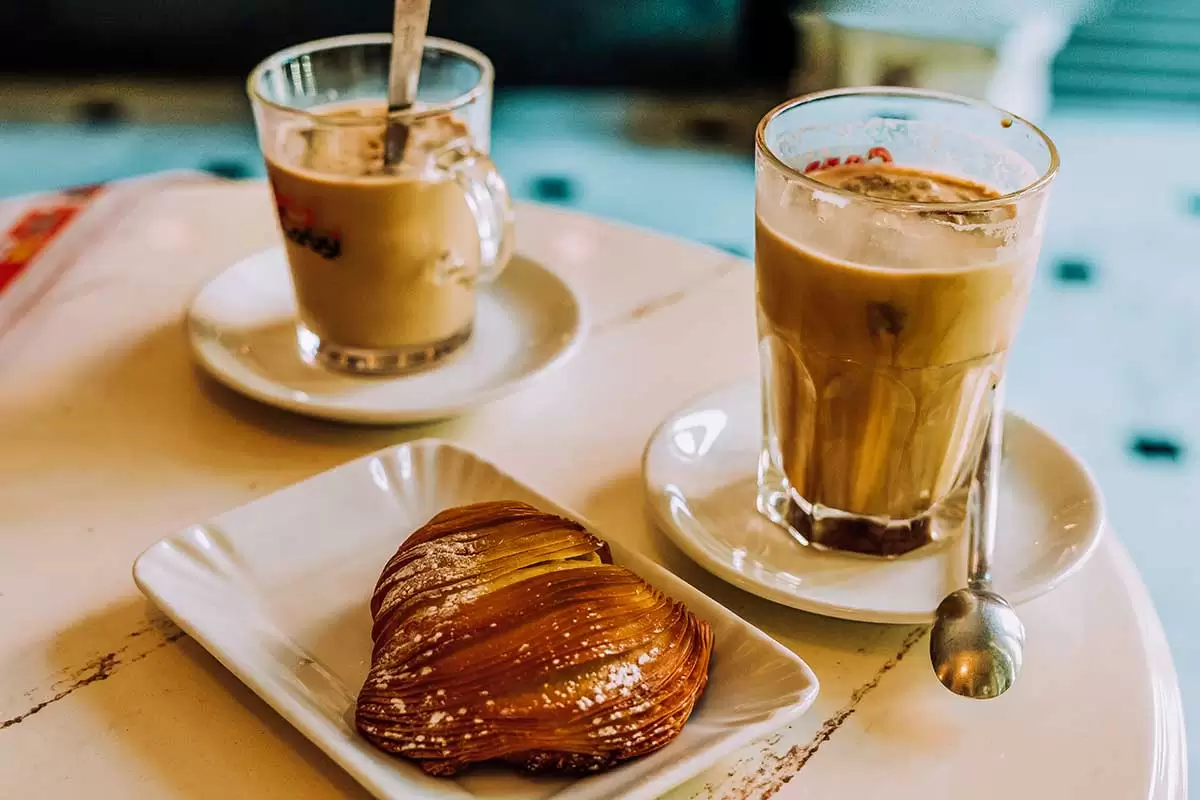 As you might have noticed at this point, the average Italian breakfast is made up of sweet, not savoury food. Although there is certainly a small percentage of people who prefer a more nutrient and savoury breakfast. Even though globalization has led to standardized habits around the world, una colazione dolce (a sweet breakfast) is still the most common choice in the morning in Italian households.
As you might have noticed at this point, the average Italian breakfast is made up of sweet, not savoury food. Although there is certainly a small percentage of people who prefer a more nutrient and savoury breakfast. Even though globalization has led to standardized habits around the world, una colazione dolce (a sweet breakfast) is still the most common choice in the morning in Italian households.
3. Italian breakfast is eaten at the “bar”
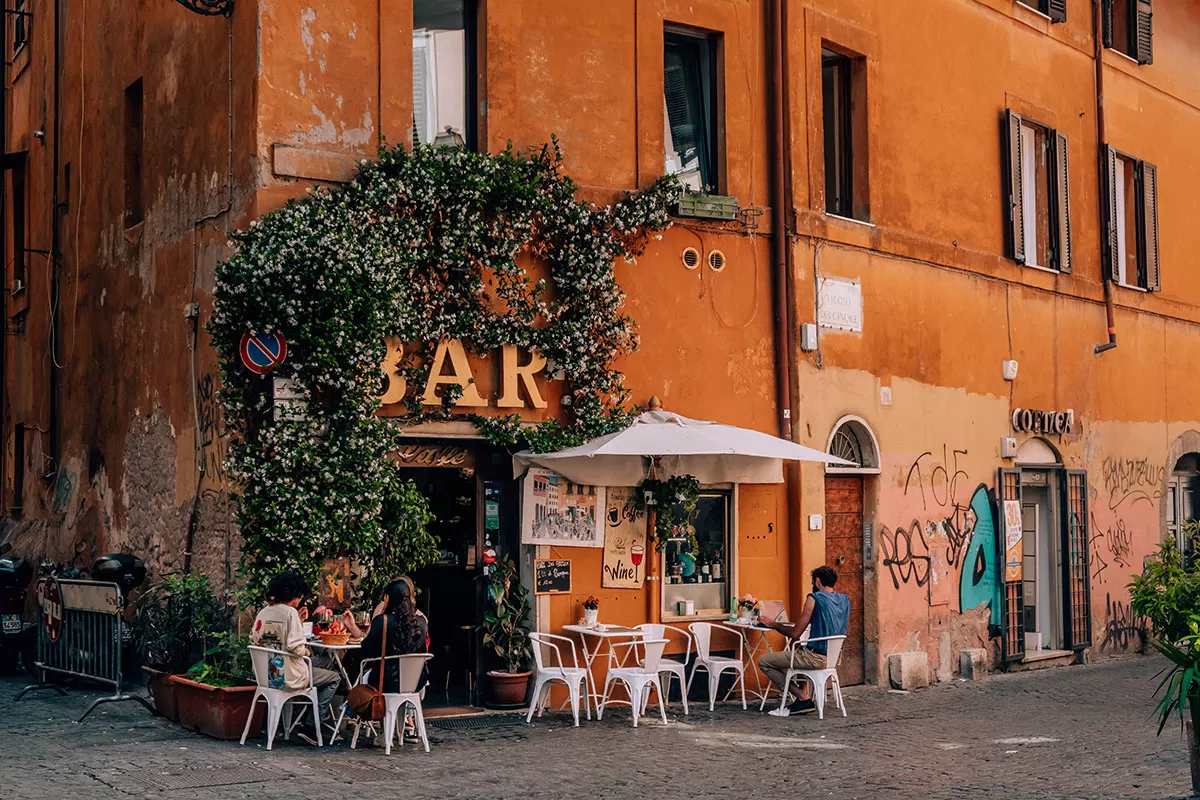 Going to a bar and ordering a croissant? In Italy, it’s possible! That’s because the Italian word for café is “bar”: a place open from early in the morning till the afternoon or even late evening. An Italian bar serves breakfast, simple lunches, and coffee all day long. A “bar” in the English sense of the term is called “pub” in Italy.
Going to a bar and ordering a croissant? In Italy, it’s possible! That’s because the Italian word for café is “bar”: a place open from early in the morning till the afternoon or even late evening. An Italian bar serves breakfast, simple lunches, and coffee all day long. A “bar” in the English sense of the term is called “pub” in Italy.
4. Italian breakfast is cheap
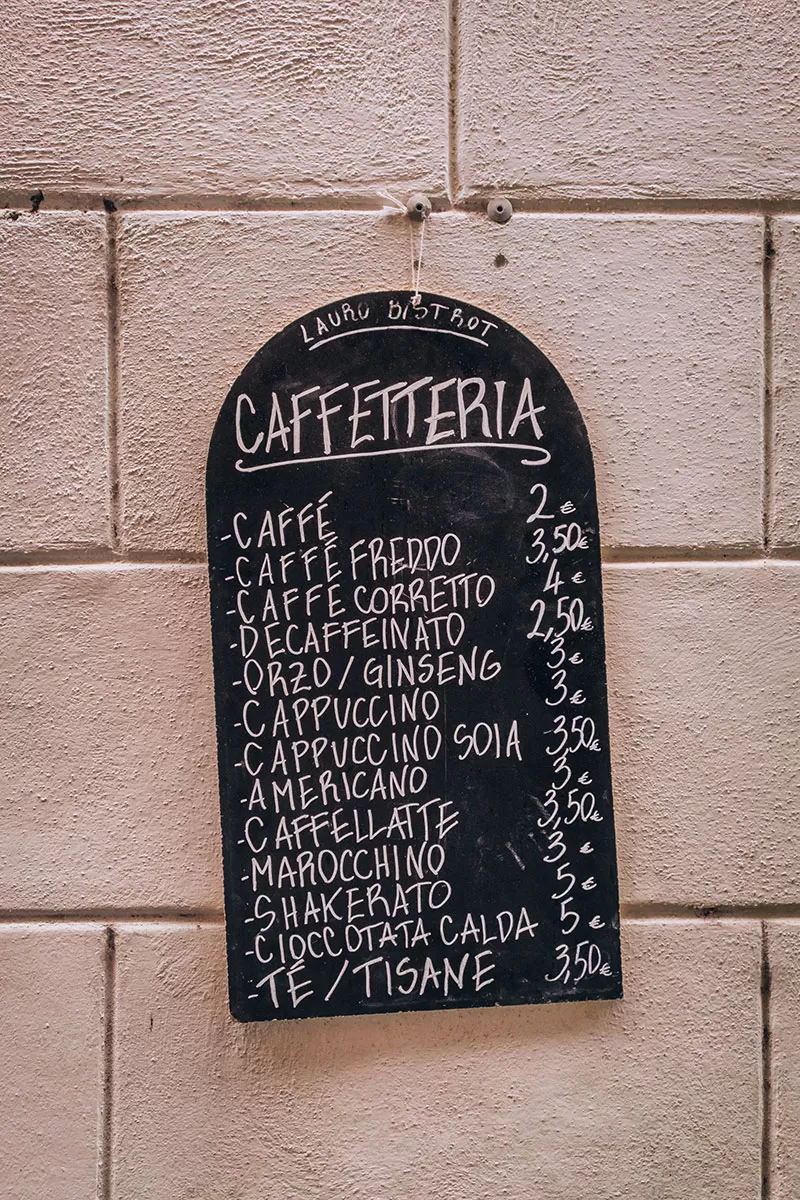 Since a typical Italian breakfast consists of a drink and baked goods, you’ll find that it is also very inexpensive. On average, a cappuccino at the café will cost you a maximum of 2 euros and a croissant between 1 – 1,80 euro. Bags of Italian breakfast biscuits at the supermarkets cost between 2 – 3 euros.
Since a typical Italian breakfast consists of a drink and baked goods, you’ll find that it is also very inexpensive. On average, a cappuccino at the café will cost you a maximum of 2 euros and a croissant between 1 – 1,80 euro. Bags of Italian breakfast biscuits at the supermarkets cost between 2 – 3 euros.
5. Hotel Breakfast in Italy
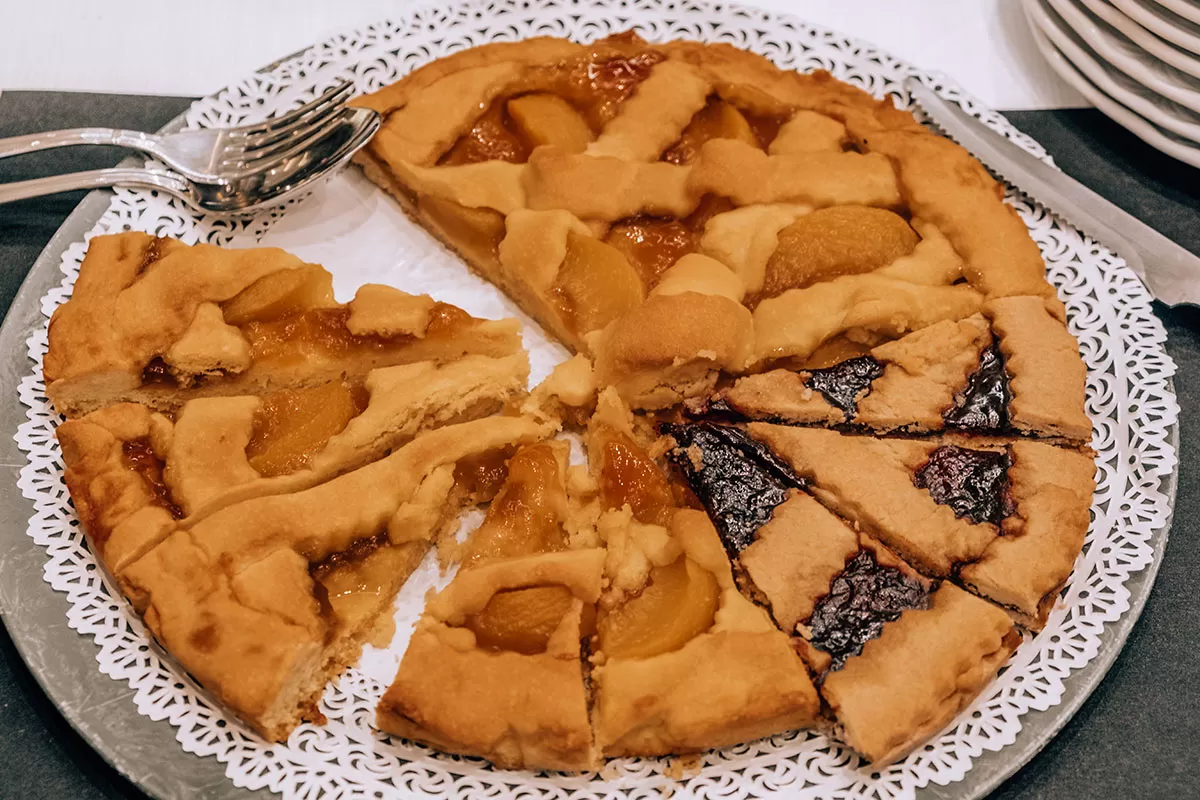
A crostata is an Italian baked tart or pie.
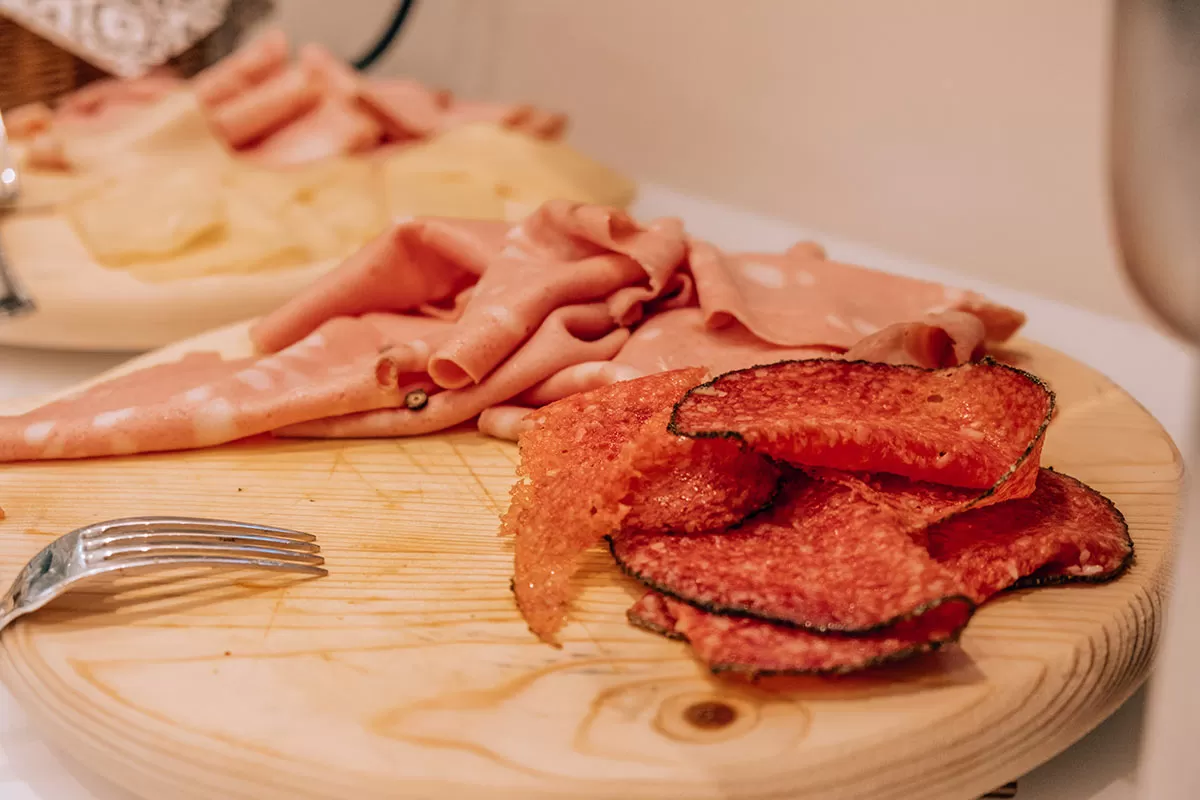
Depending on which kind of establishment you stay in during your time in Italy, for the most part, you will be offered the so-called continental breakfast which is a typical type of breakfast you’d encounter in places like Italy, France and throughout the Mediterranean. A continental breakfast generally consists of pastries, cold-cut cured meats, baked goods, fruits, toast, and coffee and is served buffet-style.
6. Italian breakfast also has regional variations
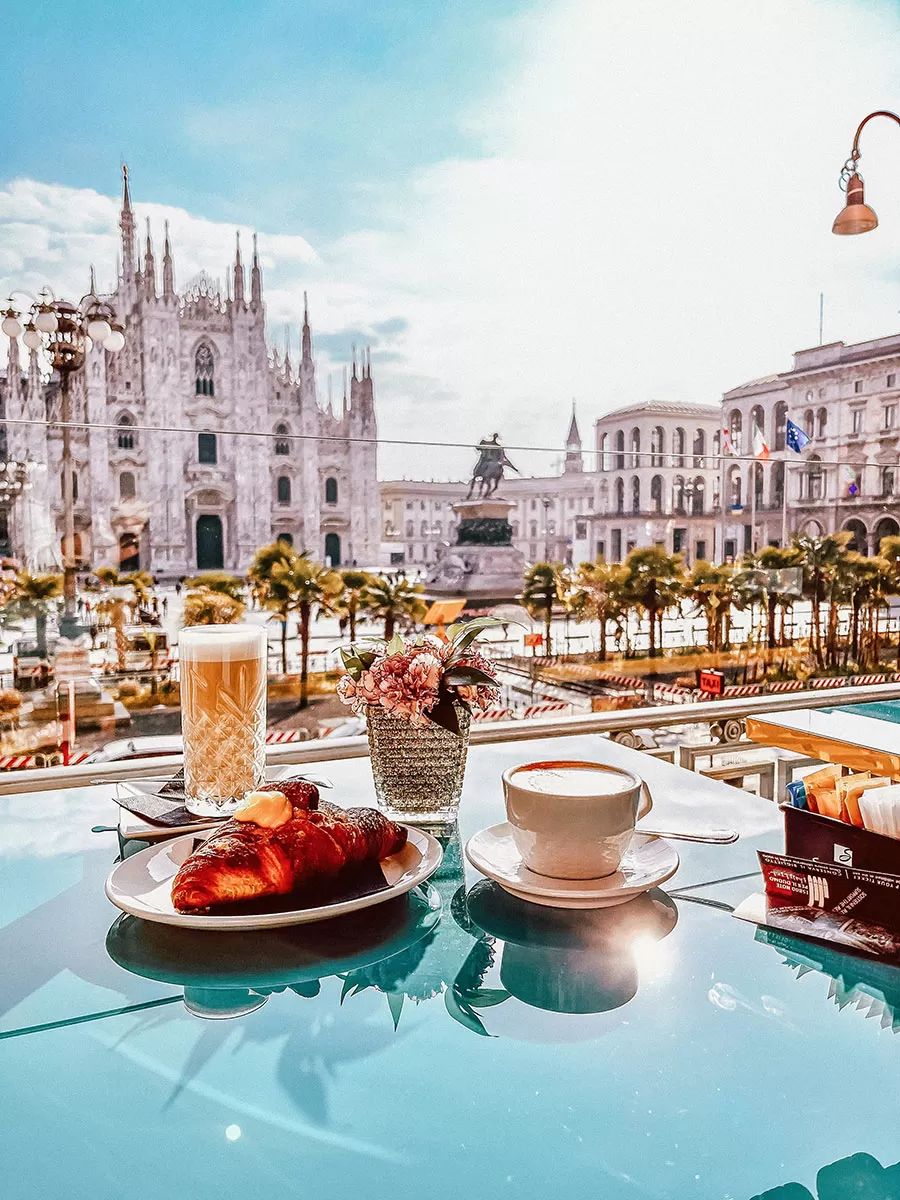
Italian culture is made up of regional diversity, so the best way to savour local nuances is by trying traditional food and dishes from that region. Here are some classic Italian breakfasts you can try in different parts of Italy:
- In Liguria (North-Eastern Italy), the traditional breakfast is focaccia e cappuccino.
- In Sicily, you MUST try granita (a semi-frozen creamy dessert) e brioche (a typical Sicilian brioche which has a cute little bun on top).
- In Rome, you can enjoy a delicious maritozzo (a sweet roll stuffed with whipped cream) for breakfast.
- In Naples, there’s a wide range of local pastries to try, including the famous sfogliatella (a shell-shaped filled pastry).
- In Trentino Alto-Adige, whose cuisine is a wonderful mix of Italian and Austrian influences, you can have Kaiserschmarrn, a sort of thick pancake studded with raisins and sprinkled with sugar.
- A type of breakfast food that is very popular all over Italy is uovo sbattuto (literally, beaten egg): basically, egg yolk that is beaten with sugar to create a uniform pale mixture. It can be eaten on its own, together with your morning coffee or used to dip ladyfingers in. In the Northern region of Lombardy, sweet Marsala wine is added to the sugar-egg yolk mixture and they call it resumada or rusumada.
7. Breakfast in Italy has changed over the years
In the past, you could flex your economic status in various ways: one of these was with which food you could afford to buy and make. For this reason, the upper classes chose to have expensive refined for breakfast, including sugar, flour, and sweets. The peasants, on the other hand, tried their best to assimilate as many nutrients and calories to fuel them when engaging in agricultural tasks. That’s why they often ate slices of polenta dipped in milk or drank coffee fortified with wine.
After the 1960s, thanks to the economic miracle, biscuits became a valid flour-based alternative in Italian households and large brands like Mulino Bianco (owned by Barilla, the brand well-known for its pasta) started producing breakfast biscuits that became and still are very popular all over Italy.
The most common Italian breakfast foods
Bread, butter and jam or nutella
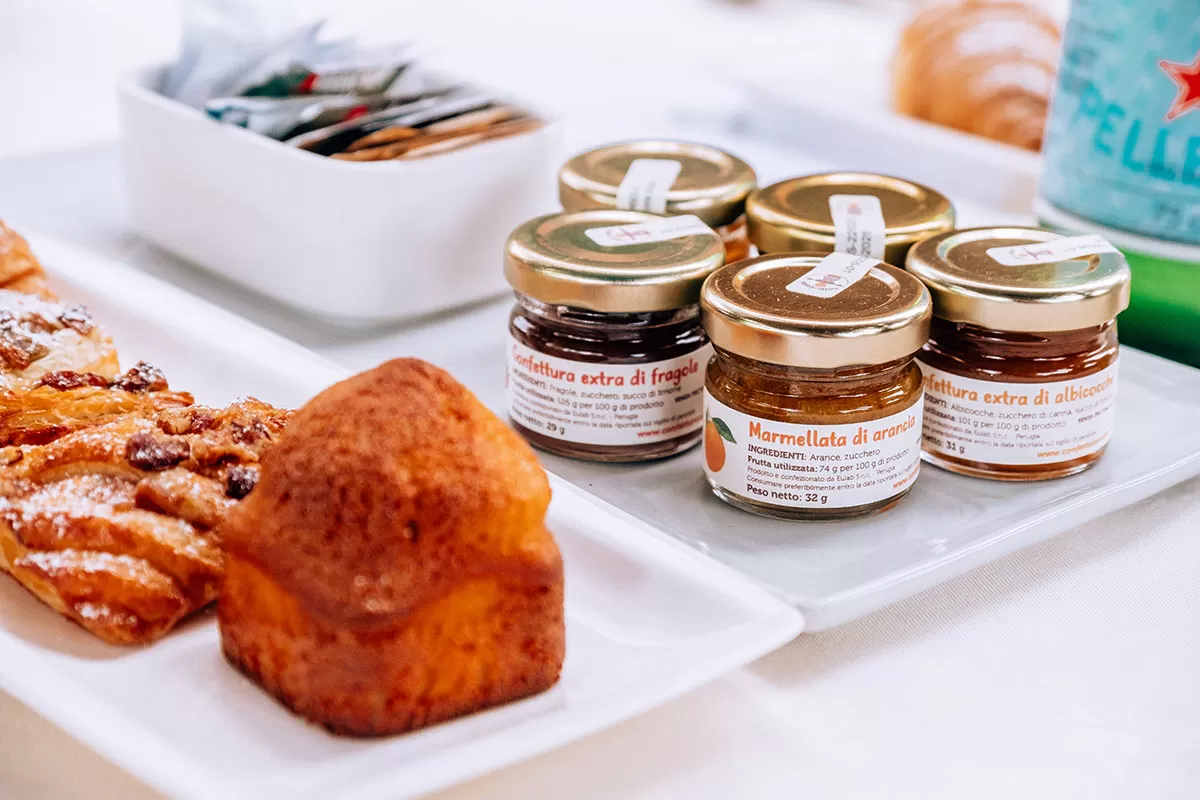
“Marmellata” (jam, marmalade, preserve)
The most traditional and standard Italian breakfast is pane, burro e marmellata, (bread, butter and jam) or pane e nutella (bread and nutella). The type of bread used can vary, but one type that is never missing in Italian households is pan carré or pane in cassetta (sliced bread).
Cornetto e cappuccino (Croissant and cappuccino)
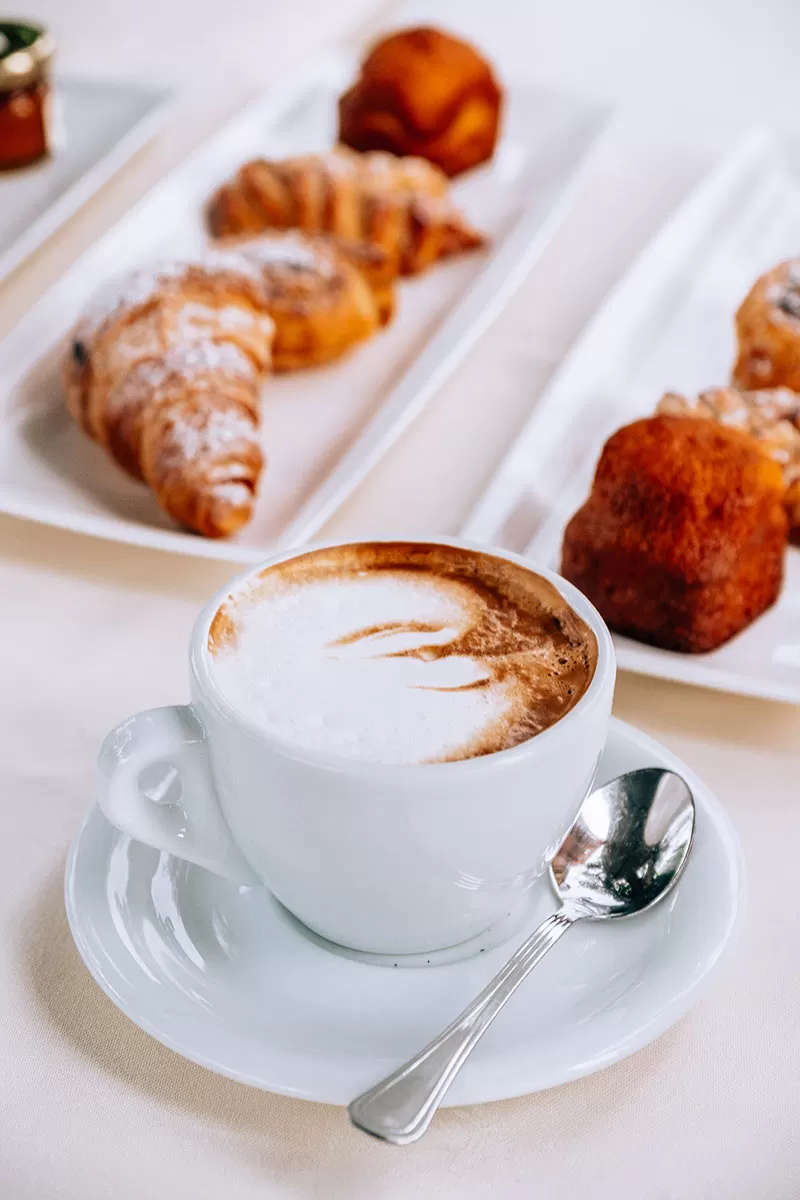 A cornetto (crossiant), or brioche (as they call it in Northern Italy), together with a cappuccino or an espresso is definitely the joy of lots of Italians who love to have breakfast in a café. This typical Italian pastry actually owes its origins to an Austrian pastry, the kipferl. It can be eaten either plain, or with fillings: the most popular are chocolate, custard cream, apricot jam or red fruit jam.
A cornetto (crossiant), or brioche (as they call it in Northern Italy), together with a cappuccino or an espresso is definitely the joy of lots of Italians who love to have breakfast in a café. This typical Italian pastry actually owes its origins to an Austrian pastry, the kipferl. It can be eaten either plain, or with fillings: the most popular are chocolate, custard cream, apricot jam or red fruit jam.
Milk and cereal or biscuits
Plain milk is a very popular breakfast drink in Italian households, loved not only by children but also by some adults. Dairy milk, either full fat (intero) or reduced-fat (scremato) is still the preferred option in Italy. However, nowadays more and more people are opting for non-dairy alternatives due to intolerances, choosing a vegan lifestyle, or just personal preference. You can easily find soy milk in cafes, however, almond milk, coconut milk and oat milk are less widespread.
The most loved food choice to have with morning milk in Italy is either dry breakfast biscuits (biscotti), (like the ones produced by Mulino Bianco), or cereals.
Fette biscottate
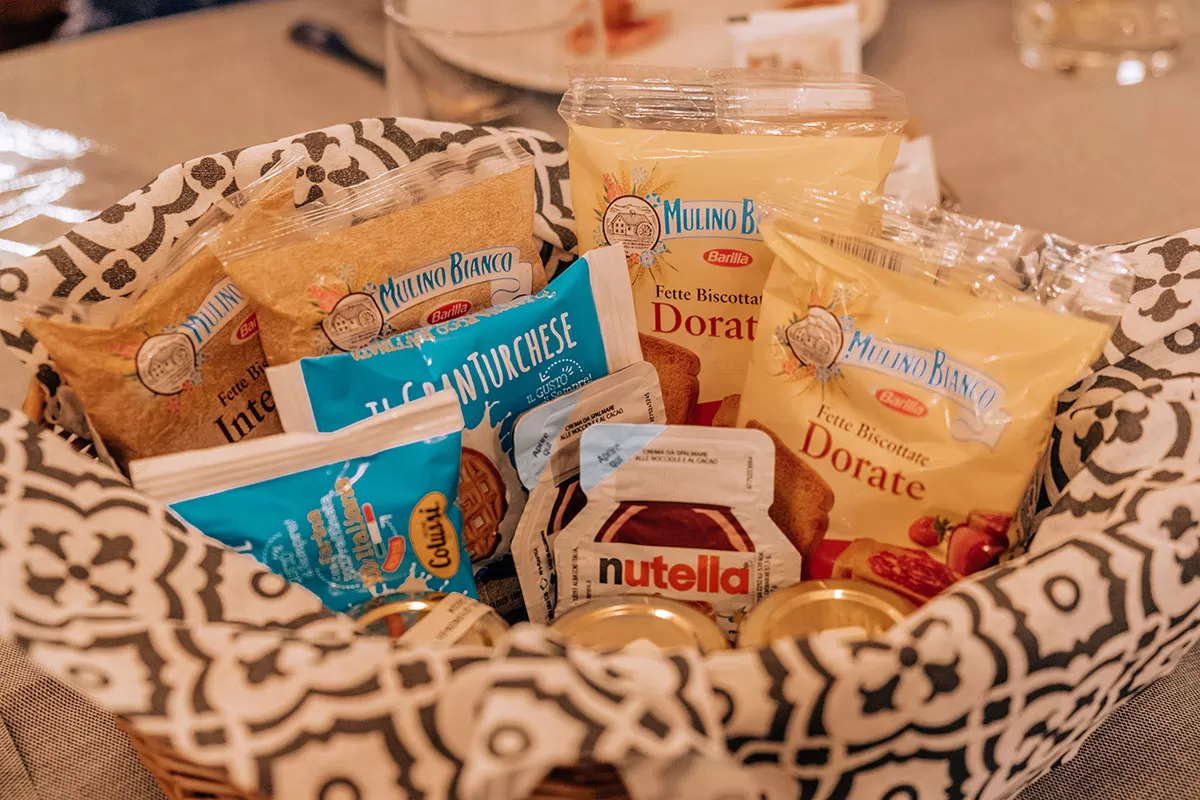
Mulino Bianco “fette biscottate” (Rusks) and Nutella
Another staple of a classic Italian breakfast is certainly fette biscottate. “Fette” means slices in Italian and the term “biscottate” comes from “bis-cotto”, which literally means “cooked twice”. They’re nothing more but dry, packaged gallettes that are very crunchy and low in calories. They are eaten instead of bread to spread butter on and/or jam. Alongside the traditional ones, nowadays you can find all sorts of varieties such as multigrain, wholegrain, spelt, gluten-free, etc.
Yoghurt, muesli and fresh fruit
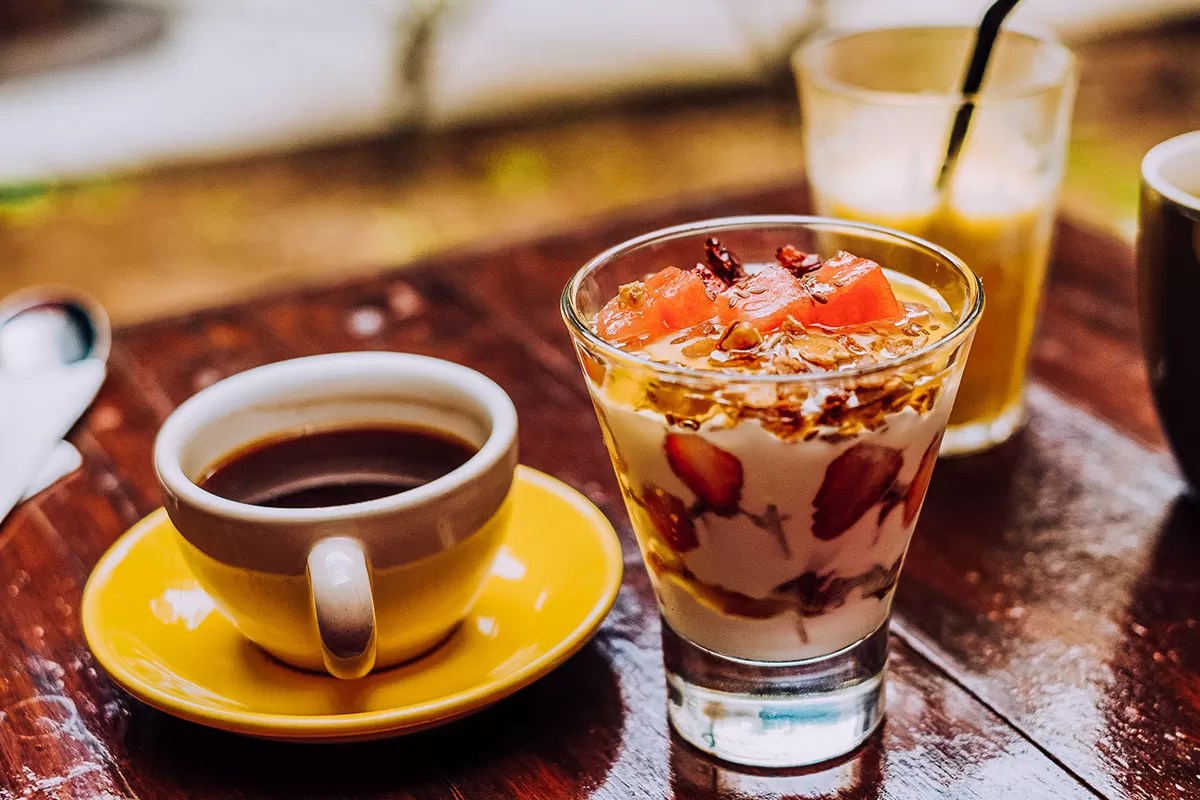 A healthy and balanced breakfast option that is becoming more and more common in Italy is yoghurt garnished with seasonal fresh fruit and muesli (or granola), accompanied by a cup of either green or black tea.
A healthy and balanced breakfast option that is becoming more and more common in Italy is yoghurt garnished with seasonal fresh fruit and muesli (or granola), accompanied by a cup of either green or black tea.
How to order breakfast in Italian
Useful Italian phrases
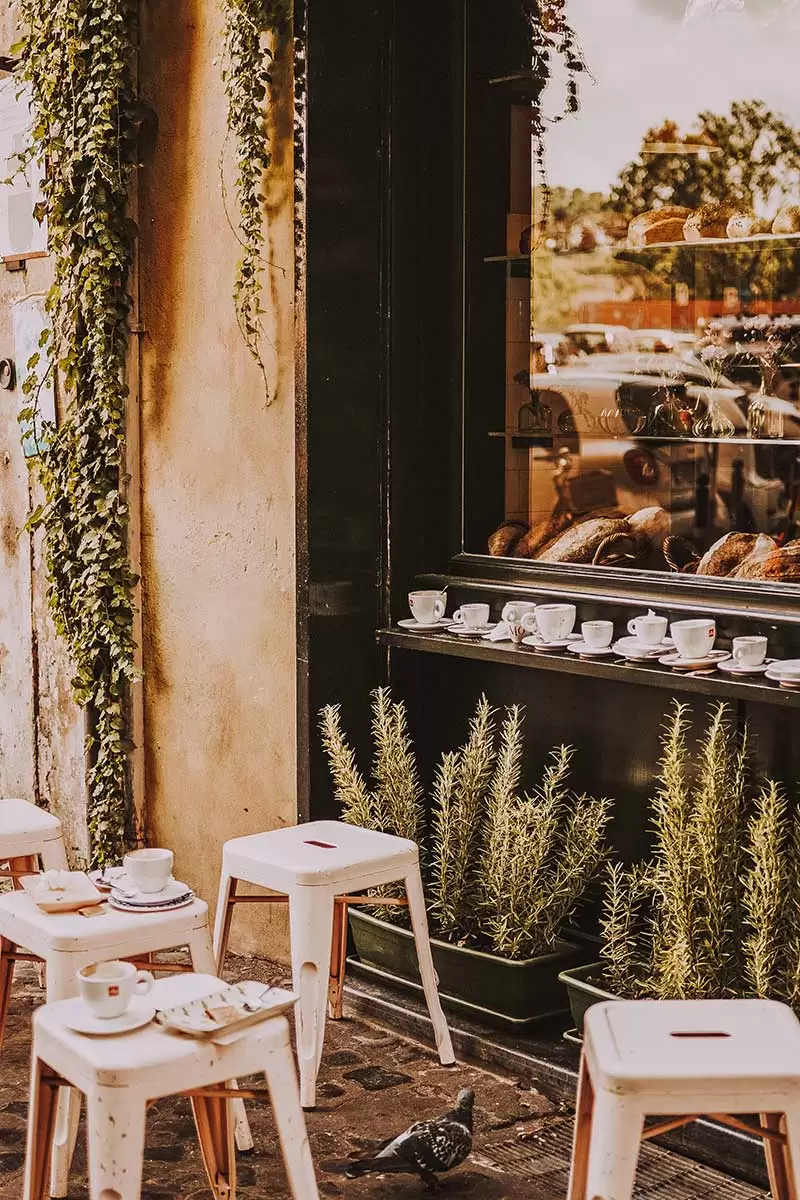 As previously mentioned, an Italian breakfast is often eaten quickly, unless you want to treat yourself and spend the morning at il bar (the café) chatting with your friends. Some cafes offer il servizio al tavolo (table service) but if they’re busy, you might have to go and order al bancone (at the counter).
As previously mentioned, an Italian breakfast is often eaten quickly, unless you want to treat yourself and spend the morning at il bar (the café) chatting with your friends. Some cafes offer il servizio al tavolo (table service) but if they’re busy, you might have to go and order al bancone (at the counter).
To make your next trip to Italy enjoyable, I recommend learning some basic Italian phrases, especially how to order food and drink in Italian. To get you started, here are some useful Italian phrases to say when ordering breakfast in Italy:
- Buongiorno, vorrei… (Good morning, I’d like…)
- Buongiorno, per me… (Good morning, for me…)
- Buongiorno, prendo… (Good morning, I’ll have…)
- Quali cornetti vi sono rimasti? (Which kind of croissants do you have left?)
- Quant’è? (How much is it?)
- Posso pagare con la carta? (Can I pay with card?)
- Grazie, arrivederci! (Thank you, bye bye!)
And don’t forget to add per favore (please) to make una bella figura (a good impression)!
Types of coffee in Italy
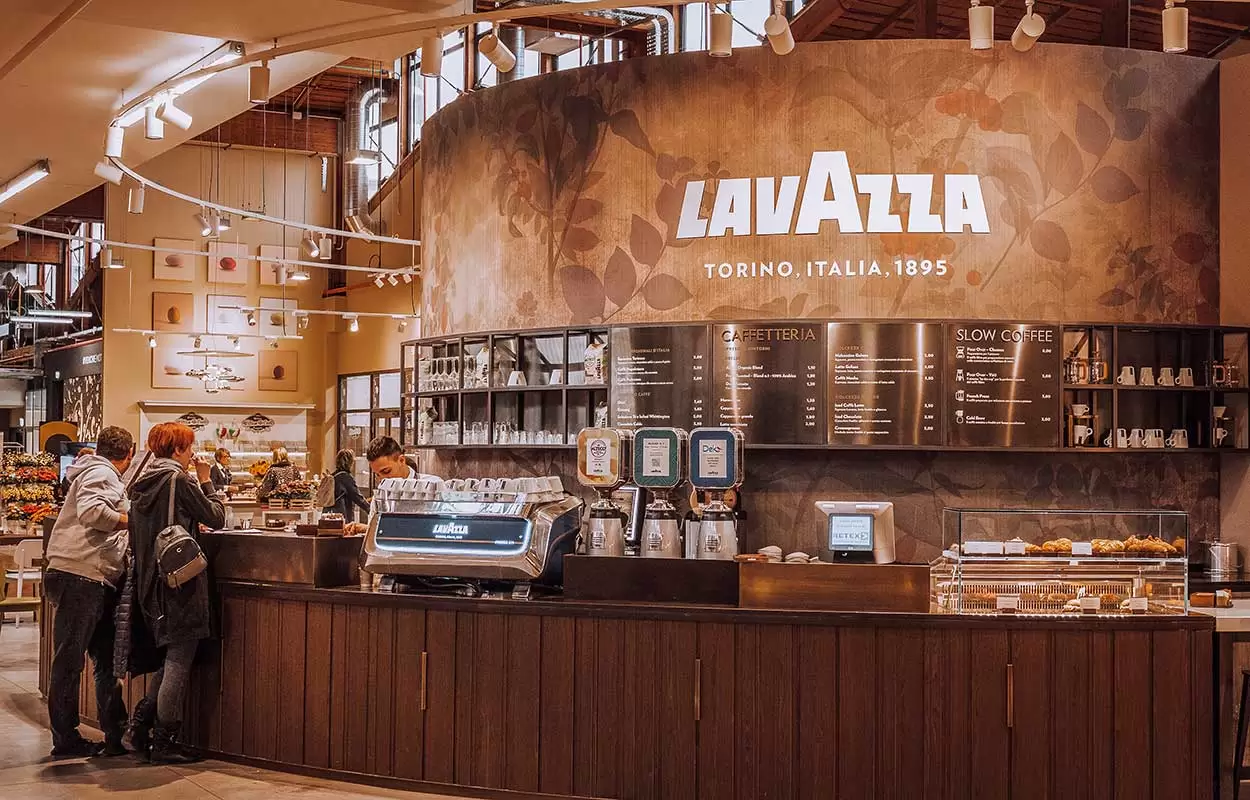 Let’s talk coffee! You should know that there’s a specific coffee etiquette in Italy. First, coffee is served in smaller cups than what foreigners are generally used to. In Southern Italy, they will also bring you a glass of water to cleanse the palate before and after drinking the coffee.
Let’s talk coffee! You should know that there’s a specific coffee etiquette in Italy. First, coffee is served in smaller cups than what foreigners are generally used to. In Southern Italy, they will also bring you a glass of water to cleanse the palate before and after drinking the coffee.
If you go to an Italian café and order un caffè, what you’ll get is an espresso. The waiter might ask you normale o lungo?, meaning “normal or long?”. “Normale” is the standard type of coffee in Italy, that is, one shot of espresso. If you want something similar to an American-style coffee with more hot water and served in a bigger cup, you’ll have to say “lungo in tazza grande”, meaning “long in a big cup”.
If, on the other hand, you want to order other types of coffee, here is what you can have in Italy:
-
- Un cappuccino: coffee and frothed milk served in a cup.
- Un caffellatte: a latte (similar to a cappuccino, but served in a glass and with no foam).
- Un caffè macchiato: an espresso with a few drops of milk. “Macchiato” means “stained”.
- Un caffè ristretto: a shorter and stronger espresso.
- Un caffè doppio: a double espresso.
- Un caffè corretto: an espresso with a few drops of grappa or another liquor.
- Un marocchino: a drink prepared with coffee, milk cream and cocoa. It is prepared in a glass so that the layers are visible and it’s typical of Turin.
- Un mocaccino: a cappuccino with chocolate, sometimes served with the addition of cocoa powder.
- Un decaffeinato: a decaffeinated coffee.
- Un caffè shakerato: cold coffee with ice. It can be drunk sweetened or bitter (not usually drunk for breakfast).
- Un caffè d’orzo: a caffeine-free beverage made from the infusion of roasted and ground barley.
Any type of coffee that contains milk is typically considered a breakfast drink, and that’s why you might attract a few strange looks if you order a cappuccino with your meal. Don’t take it personally!
If they’re not drinking coffee in a café, Italians like to brew their own coffee at home using a “Moka” pot, which you’re probably familiar with since it has become a symbol of Italian culture alongside Vespa, Colosseum and pizza.
Final thoughts on breakfast in Italy
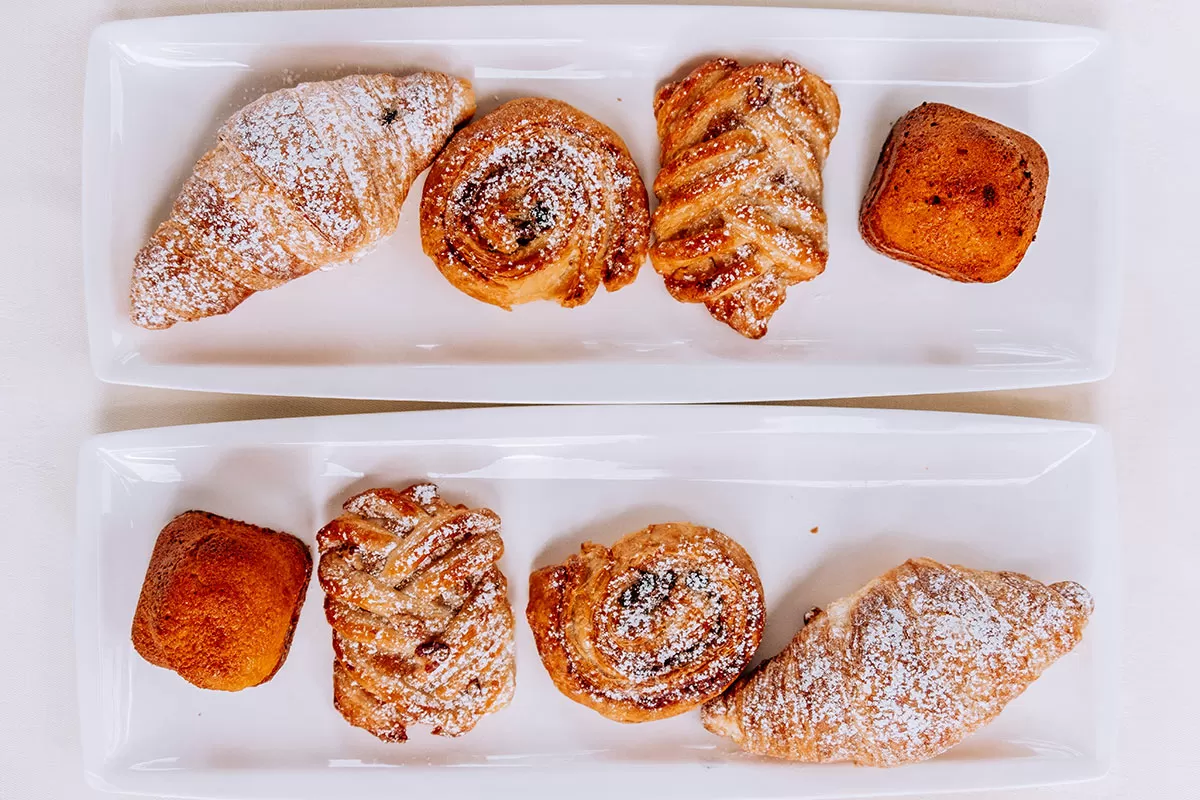 It is true that nowadays, even in Italy, there is a wider choice of breakfasts in hotels, especially if they are international chains, but family-run guesthouses or B&Bs still serve a classic Italian breakfast that provides visitors with a 100% “made in Italy” experience.
It is true that nowadays, even in Italy, there is a wider choice of breakfasts in hotels, especially if they are international chains, but family-run guesthouses or B&Bs still serve a classic Italian breakfast that provides visitors with a 100% “made in Italy” experience.
If, instead, you prefer to have a real Italian breakfast on the go, visit a local panificio (bakery) or pasticceria (patisserie) for some freshly baked bread or pastries. At the end of the day, just remember that Italy is all about enjoying food and sampling regional specialities that are worth indulging in.
 Enjoyed this guide? Are you a beginner or an intermediate Italian learner? Got a trip coming up or want to communicate with your Italian partner or relatives in Italian? Learn Italian with my unique 80/20 method
Enjoyed this guide? Are you a beginner or an intermediate Italian learner? Got a trip coming up or want to communicate with your Italian partner or relatives in Italian? Learn Italian with my unique 80/20 method
Registrations are now open to join Intrepid Italian, my new series of online video courses that use my unique 80/20 method. You’ll go from a shy, confused beginner to a proficient and confident intermediate speaker, with me as your trusty guide.
You’ll finally be able to connect with your Italian partner, speak to your relatives and enjoy authentic travel experiences in Italy that you’ve always dreamed of, and so much more.
As a native English speaker who learned Italian as an adult, I know what it’s like to feel hopeless and lack the confidence to speak. I know what it’s like to start from scratch and to even go back to absolute basics and learn what a verb is!
Intrepid Italian was created with YOU in mind. I use my working knowledge of the English language to help you get into the ‘Italian mindset’ so you can avoid the common pitfalls and errors English speakers make – because I made them once too! I break everything down in such a way that it ‘clicks’ and just makes sense.
No matter what your level is, there is an Intrepid Italian course for you, including:
- 🇮🇹 Intrepid Italian for Beginners (A1)
- 🇮🇹 Intrepid Italian for Advanced Beginners (A2)
- 🇮🇹 Intrepid Italian for Intermediates (B1)
You can join 1, 2, or all 3 courses, it’s entirely up to you. The best part is that you have lifetime access so you learn anytime, anywhere and on any device.
As your guide, I walk you through each lesson, step-by-step, using my unique 80/20 method. My approach is different from traditional methods because I teach you the most important 20% of the language right from the beginning so you can start to speak straight away.
Each course includes video lessons, audio exercises, downloadable worksheets, bonus guides, a private support community, and lifetime access all designed to streamline your learning while having fun.
It even comes with my famous Celebrate with a Spritz Guarantee. After 30 days of using Intrepid Italian, if you don’t want to celebrate your newfound Italian skills with an Aperol Spritz, you don’t have to pay a penny! Cheers! 🥂
Join Intrepid Italian here and start learning today!
Ci vediamo lì! (See you there!)
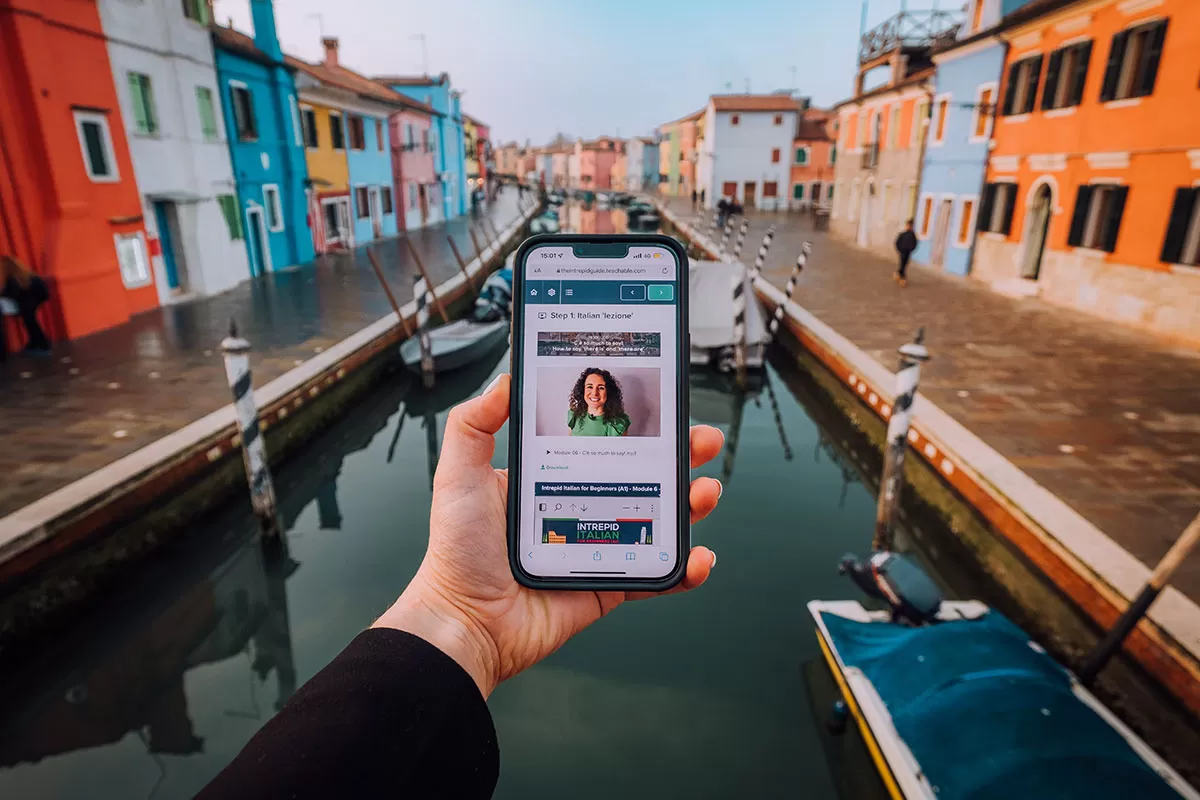
Like it? Pin it for later!
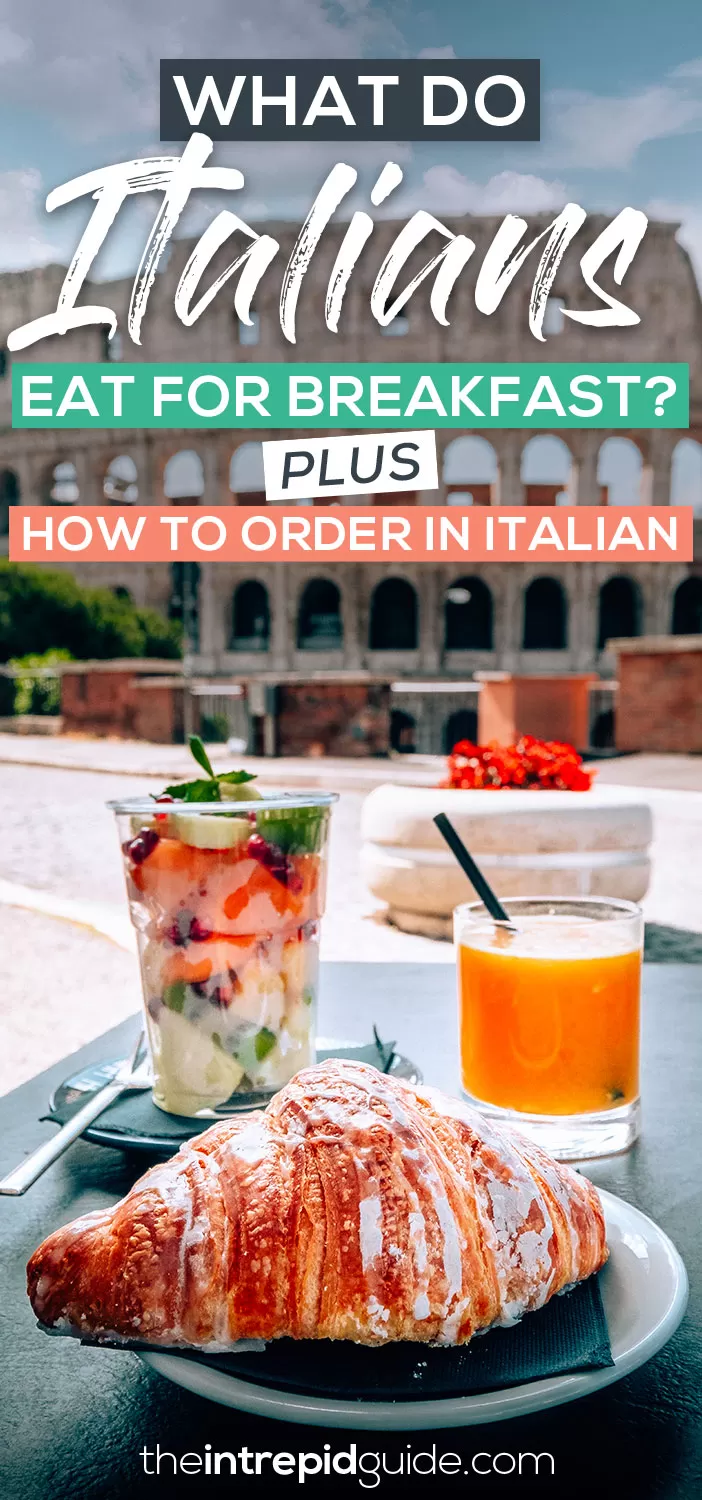
Learning Italian? Check out these Italian language guides
- Italian for Beginners | How to Learn Italian in 3 Simple Steps
- Italian Cognates & Loanwords: 17 Rules to Italianizing English Words You Already Know
- Ultimate Guide to the Italian Alphabet: Letters, Pronunciation, and Stress
- How to say ‘Merry Christmas’ in Italian [Plus New Year Vocabulary and Quiz]
- 34 Words That Don’t Exist in Italian (English Loanwords in Italian)
- Italian Culture: 19 Weird Things Italians Do That No One Warns You About
- 17 Weird Italian Superstitions Italians ACTUALLY Live By
- 17 Must-Know Italian Hand Gestures: The Ultimate Guide
- Top 24 Most Important Verbs in Italian (Plus PDF Cheat-Sheet & Quiz)
- 10 Ways Natives REALLY Say ‘You’re Welcome’ in Italian
- How to say ‘Please’ in Italian in 9 Ways Like a Native
- 41 Italian Greetings: How to Say ‘Hello’ in Italian Like a Local
- 125 Most Common Italian Phrases for Travel You’ll Ever Need [PLUS Printable]
- 8 DEADLY mistakes in Italian (& How to Avoid Them)
- How to Conjugate Italian Verbs in 3 Simple Steps [Italian for Beginners]
- Is Italian Hard to Learn? 7 Common Mistakes & How to Avoid Them
- Master Days of the Week in Italian (7 Simple Memory Hacks)
- Italian Numbers: How to Count in Italian From 0 to 1 Billion (Plus PDF Download)
- How to Order Food & Drinks in Italian [Italian for Beginners]
- 15 Italian Words You Should NEVER Mispronounce [& How Not To]
- 11 Effective Hacks That’ll Help You Learn Italian So Much Faster
- Top 14 Italian Words You Should NEVER Say [& What to Use Instead]
- 20 Hilarious Everyday Italian Expressions You Should Use
- Romanesco: 25 Cool Roman Dialect Words You Should Use in Rome
- 10 Reasons Why Learning Italian Will Change Your Life
- 10 Italian Expressions Italians Love Saying
- 10 Italian Phrases That Will Instantly Make You Sound more Italian
- Funny Italian Sayings: 26 Food-Related Insults You Won’t Forget
- 15 Romantic Italian Films That’ll Make You Love Italy Even More
- How to Master Common Italian Phrases for Travel (Like a Local!)
Over to you!
Did you find this guide helpful? Got a question? Let me know using the comments section below or join me on social media @intrepidguide or @intrepiditalian to start a conversation.
Thanks for reading and I hope you enjoyed this post.
Like what you see? Subscribe using the form below to have all of my posts delivered directly to your email.

